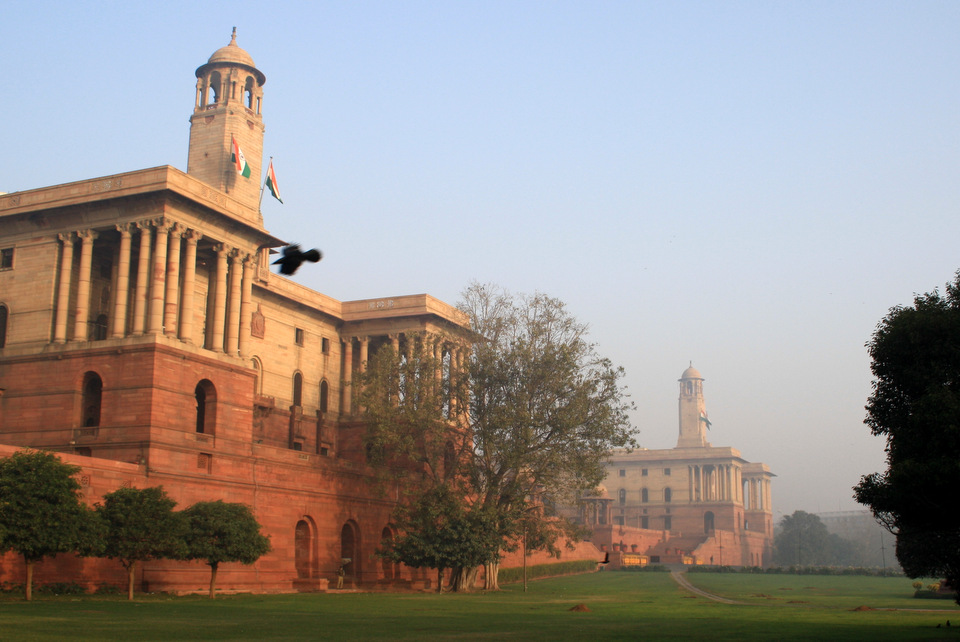History of Delhi in a nutshell
Today, Delhi is synonymous with the administrative headquarters of Indian government. Delhi is also a heritage city.

The federal administrate blocks in New Delhi. The twin shades of red sandstone used to build structures are typical examples of the Lutyen's architecture style used in Delhi's structures.
The federal administrate blocks in New Delhi. The twin shades of red sandstone used to build structures are typical examples of the Lutyen's architecture style used in Delhi's structures.
H
istorically, Delhi was not always the capital of India, though many dynasties that ruled this country had their affairs with Delhi , in some way or another.The fallacy is that any dynasty who set up their capital in Delhi was eventually thrown out of power. The last being the British, who established the sprawling New Delhi, popularly the Lutyens' Delhi , named after the British architect Edwin Lutyens (1869–1944), who was commissioned during the 1920s and 1930s for a large number of architectural design and city planning during the colonial period.
[#2168]And before the British, its was the Mughal Empire who setup a capital in Delhi. Shahjahanabad, as it was called after was built by built by Shah Jahan (who also built the Taj Mahal in Agra) was the capital of the Mughals from 1638 to 1649 CE. This is essentially the walled city encircling the Lal Qila( Red Fort) and the Chandni Chowk. And of course this part of the Delhi is presently called the Old Delhi (New Delhi being the Lutyens' Delhi area ) .
Beyond the Mughals, it was the sultanates that ruled Delhi, many sultanate dynasties set up their capitals in Delhi, and eventually fallen out of power.
You can visit the sprawling Lodi Gardens in Delhi with many 15th century monuments, mostly the tombs and mausoleums of the rulers. This is one of the must see places in Delhi, if you are keen on the heritage themes.
Then there is Purana Quila ( Old Fort ) built by a series of rulers, overlooking the Yamuna River. This is one of the oldest surviving structures in Delhi.
And of course there is a large who is who list of sultanate dynasties who built their capitals in Delhi. For example Ferozabad, built by Firuz Shah Tughluq (1351–1388), Jahanpanah , built by Muhammad bin Tughluq (1325–1351), Tughluqabad , built by Ghiyasuddin Tughluq (1321–1325), Siri Fort , built by Alauddin Khalji in 1303 and Mehrauli , built by Qutubuddin Aibak (who also built the Qutub Minar ) in the 12th century to name a few...
For the far end of its history , Delhi borrows a lot from the Indian mythology to describe its legendary past. The city of Indraprastha ( City of Indra ) the capital of the Pandavas in the Mahabharata epic, located on the banks of the river Yamuna. Some even says the Purana Quila stands exactly on top of this ancient capital!
Never mindful this city's turbulent past and the chaotic present, you'll find an enigmatic silence at Raj Ghat, the final resting place of Mahatma Gandhi, revered as the father of India.
See the Attractions in Delhi & how to plan your itinerary.
